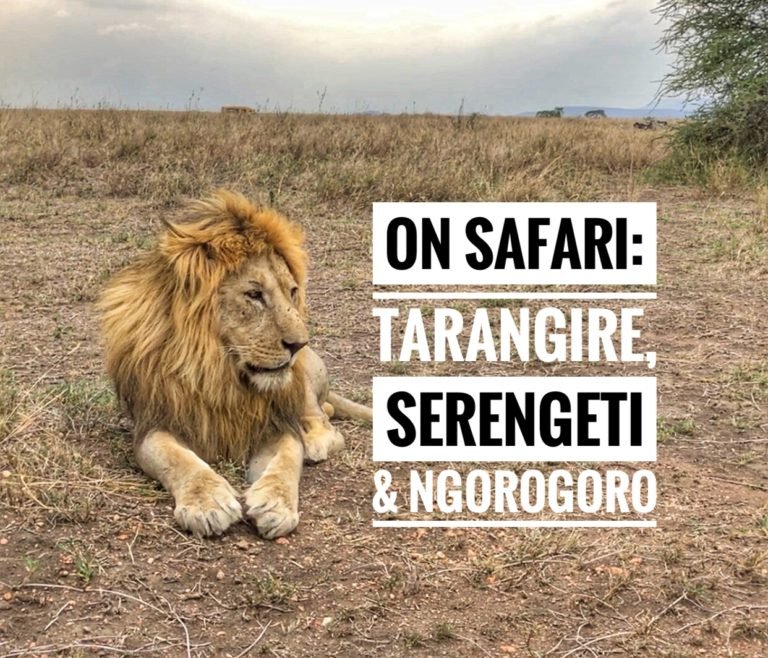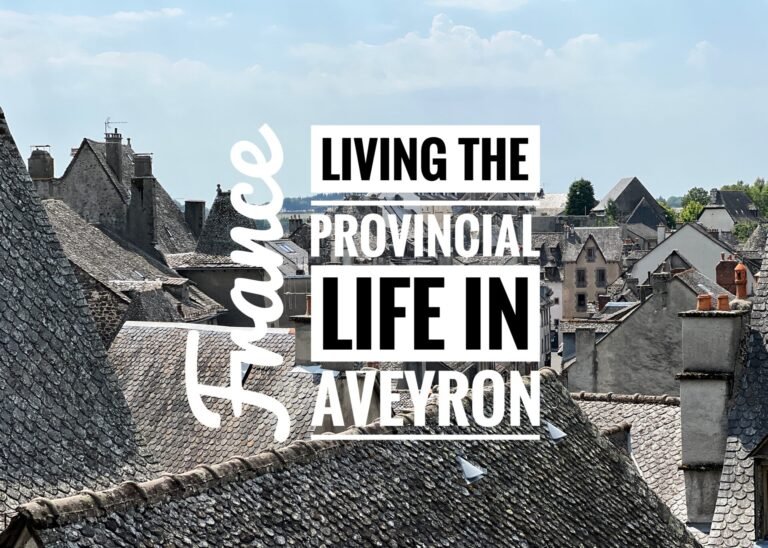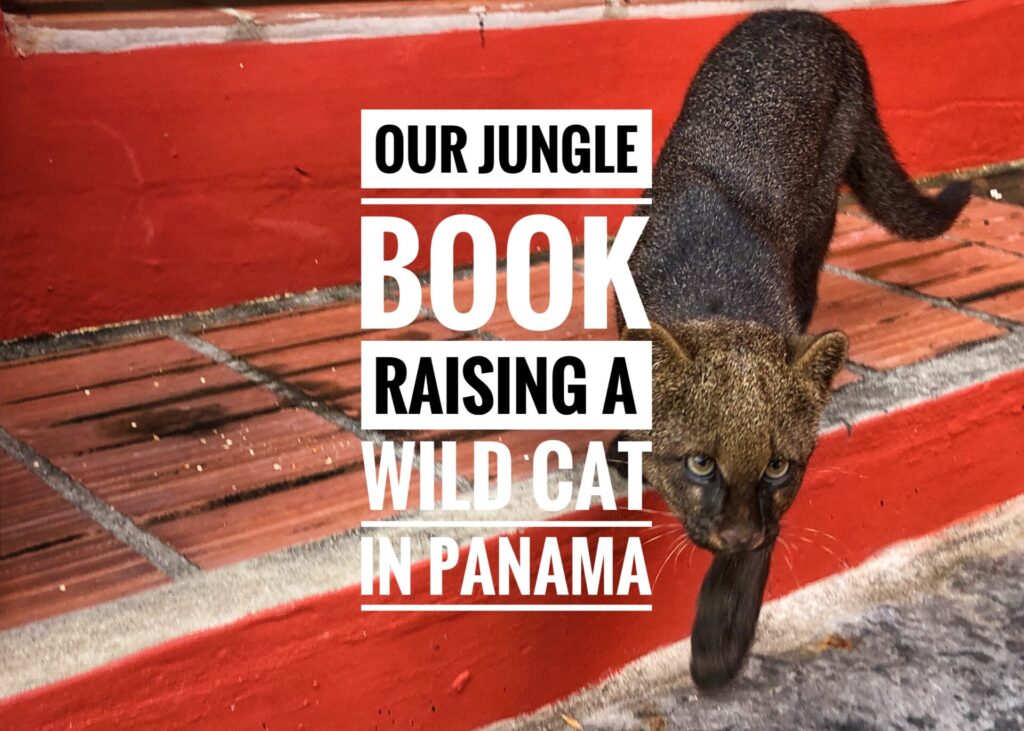
Welcome to the jungle! Aka…our home for nine weeks in the Los Santos province of western Panama. When we took this housesitting opportunity, we knew it was going to be extraordinary, thanks to the sweeping Pacific views, the howler and capuchin monkeys that swing and hoot through the surrounding canopy, and the chance to watch four (regular) cats while communing with the rhapsodic sounds of true nature and nothing else 24/7. What we didn’t expect, however, was that we’d also be raising a five-week old rescued jagarundi jungle cat.
So, you’re probably wondering…how on earth did we find ourselves in this once-in-a-lifetime amazing situation? Marcy, his foster mom, tells the story…
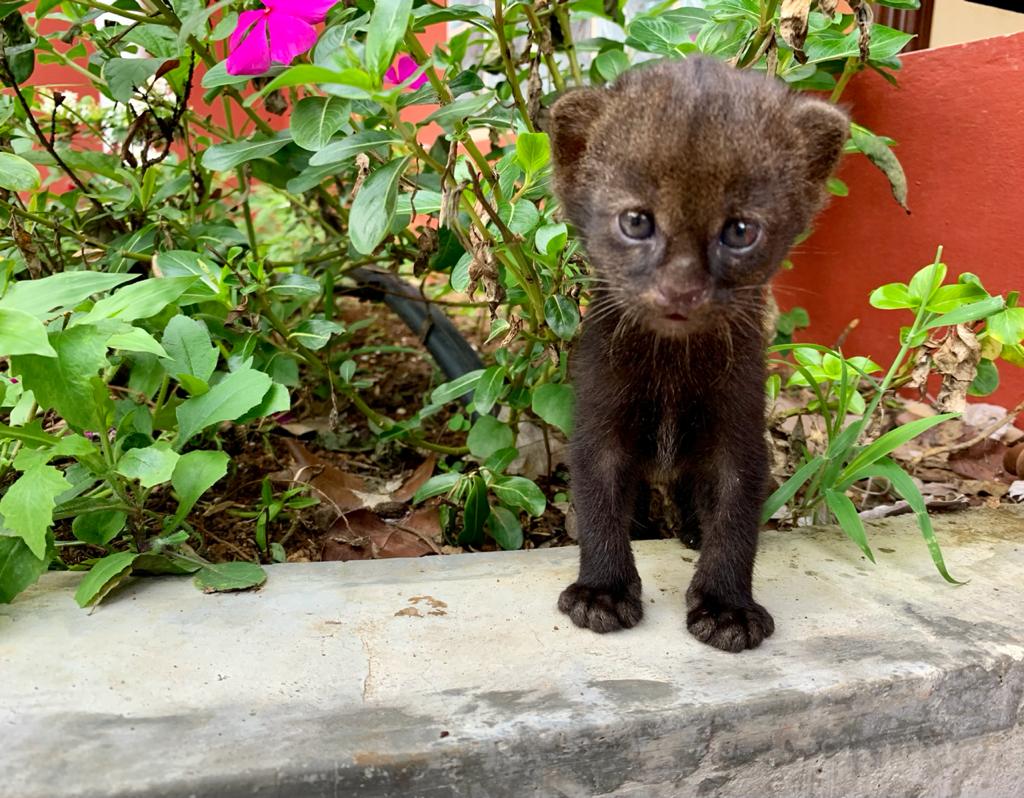
Baby Jaggy
“I was sure it was an agouti when I first rounded the corner and saw a dark blob in the middle of the road. I was expecting it to run off… but it didn’t move. As I got closer and stopped in front of it, my second thought was “OMG, it’s a baby jaguarundi!”
“But I quickly dismissed this idea as ridiculous—it had to be a regular domestic house kitten (with weird little ears). It didn’t move or make a sound when I picked it up. I looked around and couldn’t see any evidence of mom, because I was always told if you find an animal, leave it where it is. But, I was concerned because it was an extremely hot day and it was very close (about a 100 meters) to an active coyote den. The poor thing was in distress and would probably perish if I walked away…so I picked it up and took it home. After some quick discussions with local experts, the kitten was probably a week old because his eyes were barely open.”

“‘It’s not a regular kitten!’ – this was the message I received from Ameth (a local friend/worker who agreed to take the kitten at the beginning), and I read it at least three times… ‘it chirps like a bird or a bat.’ At that moment I knew it was, in fact, a baby jaguarundi, but to be sure, I sent a photo to a vet.
Confirmation was made, and the wheels of the local government started spinning. In Panama, jaguarundis are considered rare / endangered and are illegal to keep as pets. So according to them…
Step 1: it needs to be kept in a quiet, secluded, place (not a village), so we moved it back to our house (like we needed a fifth cat)! ?
Step 2: an attempt must be made to reunite it with mom. So we put baby in a big kennel and left it in the same location we found it and watched with binoculars from the car, parked a fair distance away. If mom, or danger, were to arrive, we could react accordingly. This was a big endeavor and we had a lot of help from Ameth and his daughter Anabel, but sadly, despite a weeks of trying, any hope of reunion was lost.
After 7-10 days, kittens lose their bond with mom (and vice versa) as the scent changes. Sadly, kitten and mom wouldn’t even recognize each other even if reunited.
Baby Jag was our responsibility now. Gulp…”
Jaggy getting his bottle at about two weeks. The suckling sounds are so adorable.
(Marcy), “We started working with a wonderful wildlife vet that has extensive experience in rehabilitation of animals for release. She is part of APPC Panama and Ambiente (department of wildlife and environment in Panama). Her name is Dra Mercedes Evens. She has been integral to this process and we are in contact with her every day.
When reuniting Jaggy and mom failed, we were told Ambiente would be taking him. They said, ‘bring him to the office in Las Tablas on Thursday. Oh, and if you could bring any food and maybe leave his cage that would be great…we don’t have a big budget…’
We had a sinking feeling when we heard this. I called back and suggested maybe it would be better if he remained with us until they found a placement and they quickly agreed.”
Jaggy gets burped (these were instructional videos for us.) Unfortunately, we didn’t get to be part of the bottle feeding, but probably for the best because at that time Jaggy was living in the house, much to the regular cats’ dismay and up 2-3 times at night.
(Marcy), “As it became apparent that Ambiente couldn’t place him, they, (Dra Evans) asked us if we could raise him. She said, ‘he seems to be happy and thriving. You are ideally situated because of your secluded location and the fact Jaggy was born in your area—this makes his release so much easier.’”
Jaggy snoozed out after a bottle.

Food coma!
(Marcy), “Dra. Evens raised two Jaguarundi sisters that were a month old, so she really knows what is involved. She is also extremely supportive.
The problem for us is that we were returning to Canada for two months soon. How could this work? Fortunately, we found two adventurous house-sitters that are willing to take on the challenge while we are away.”

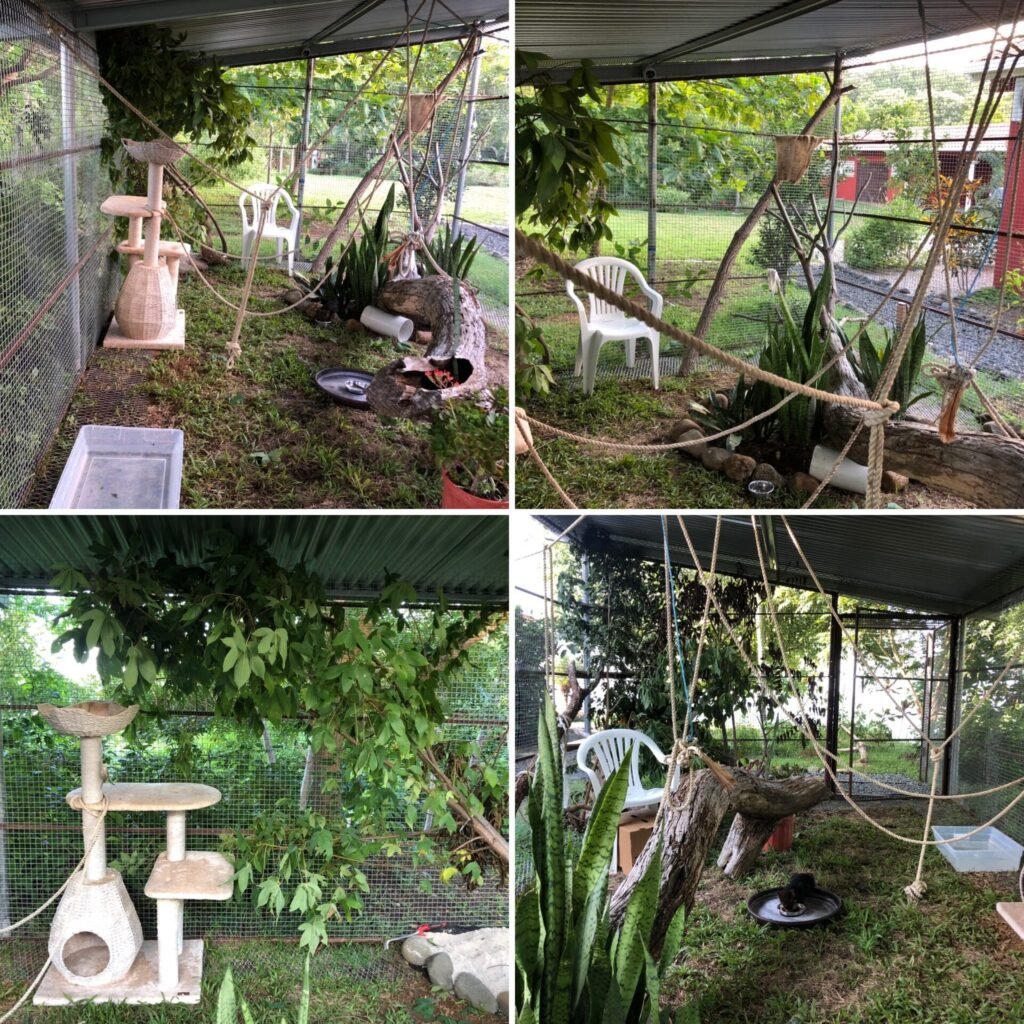
(Marcy), “Since this was a quick decision, we built a large outdoor living space as it will be integral to Jaggy going forward.”


Jaggy enjoying his new pad. Those eyes…wow.
And this is where we came in…
A few facts about Jaguarundis
-They are closely related to the puma.
-They grow to be about twice the size of a small house cat. By the time we left, Jaggy was about the size of our smallest house cats.
-Jagarundis are very elusive animals. Not ours. ? We truly hope he’s ok long term because of his interaction with humans.
-They are found from southern Texas to central Argentina
-Population numbers of the Jaguarundi are much less than once thought.
-Thankfully for us, he is unlike other cats and not nocturnal. He is most active during the daytime.
-They have at least 13 distinct calls, ranging from a chirp, purr, whistle or even a scream.
-In the wild, they hunt small mammals, birds and reptiles from the ground.
-He was seen jumping as high as a 1-1.5 meters off the ground to try and swipe a bird from the air! This will increase to two meters when he’s full grown.
-The breeding behaviour is not well known; scientists are unsure whether Jaguarundis raise cubs alone or as a pair. Females will have between 1-4 young which will remain in the den for around 28 days. Unless of course, you’re this particular jaguarundi, in which case you’re stuck with us…
Our Jaggy Adventure
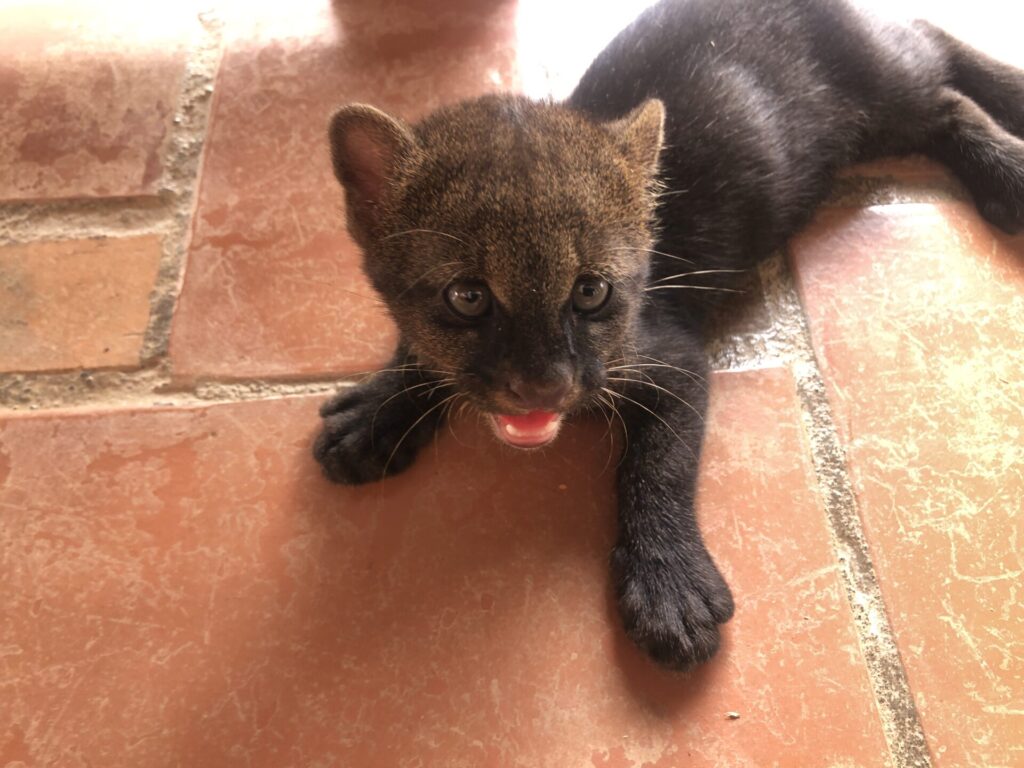
Needless to say, we were thrilled to take over, as life was pretty enchanting with this little guy. Fortunately, upon arrival, his schedule and needs were already getting less demanding and we only had to feed and exercise him twice per day. Exercise consisted of chasing us around the garden, “fighting” with stuffed bears, attacking feathers, and chasing the cats around.
A dose of Baby Jaggy.


As you can probably tell, Jaggy was usually a barrel of energy but oftentimes after a good romp or meal, he would fall utterly exhausted on you for a quick snuggle. He was very affectionate and sweet and followed us everywhere.








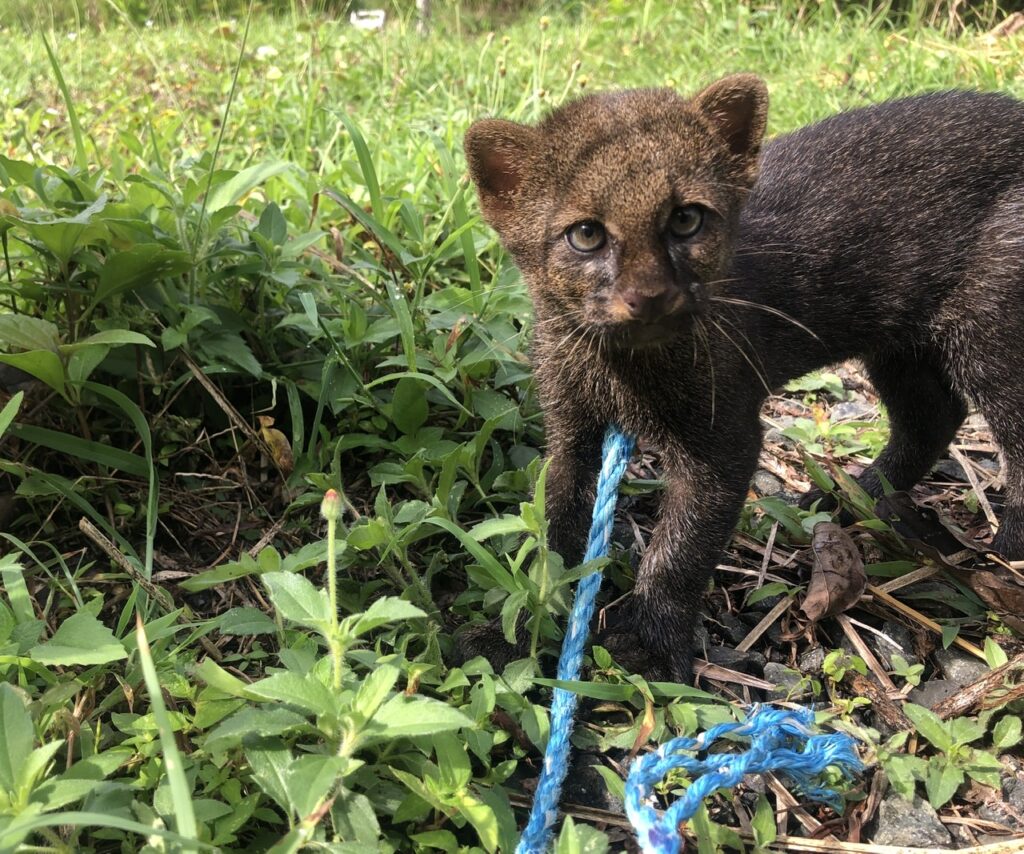
Photo Montage! He was a bit of a ham.

For most of our time there, Jaggy lived the high life and ate raw chicken, yellow-fin tuna, and beef heart. He wasn’t a fan of ground beef, and would only eat chicken neck when pureed in a blender, which to us resembled the pink shit that’s inside of a Chicken McNugget. We enjoyed the time when we fed him raw meat because later on we had to present him with lives animals to begin working on his hunting skills. Not something we looked forward to.
Procuring Live Food
In fact, a few weeks prior, Mandy had been basically despondent in Vegas after a feral cat attacked a pigeon in front of her. She isn’t even particularly fond of pigeons; who is?! Fast forward to being foster parents to a jungle cat where we never truly dissected the unnerving fact that in order to properly rear a jaguarundi, his future survival requires development of hunting skills and exposure to live kills. In essence, it turned our formerly sweet putty-tat into a natural born killer so he could become a successful adult jaguarundi and survive on his own in the jungle.
We also didn’t know it would be so much work to procure some living breathing food. The jungle outside our door literally chirped, croaked and creeped 24/7, so you would assume it would be easy to get a growing jaguarundi a ready-made snack after a quick walk-a-bout. However, frogs, crabs, and fish proved feeble and although we trapped a couple mice, which were few and far between, both managed to escape to freedom before Jaggy wised up and did his predatory thing. Finally, however, we got a hot tip from a local telling us that he knew of somebody who had quail to sell about a 30-minute drive away. After one attempt to pick up the quail we were told to “come back after 4 pm.”

2nd attempt, we brought back-up, Anabel with us to translate and assist. After 30 minutes driving up and down a dirt country road asking around if this was “the quail house” eventually we were told they didn’t have any, but to come back in three days.
So, before we left on the third trip, we worked with Anabel to confirm that they had four quails waiting for us, as well as the price/cost. Apparently the price was… “Coca Cola.” Ah, yes, who needs cash when you can barter with caramel and water?! ? So, what else could we do, but pack up five cokes (four quail = a coke per bird, plus a tip.)

When we arrived, fortunately the man had been directed to look for two lost looking gringoes in a pick up truck. He hollered and motioned toward a box perched on the side of the road with a bunch of holes in it. He then mumbled in nearly unintelligible Spanish of which we understood “caja” meaning box and “quatro” four and “cordoniz” meaning quail. We nodded a vague confirmation and gave him his five ice cold Coca Colas in exchange for the box.
(Side note: Panamanian Spanish, particularly in rural areas, is CONSIDERABLY harder for us to understand than Mexican Spanish. Most seem to slur or mumble the syllables noticeably more in Panama, or make letters like “s” silent that are otherwise quite important for comprehension.)
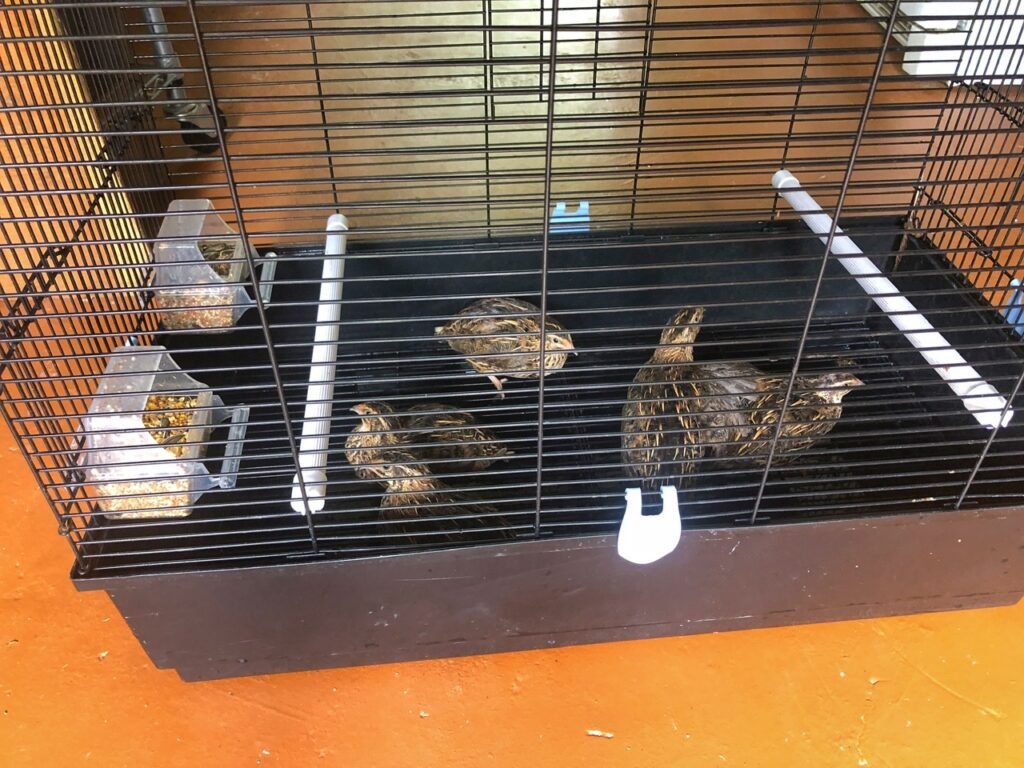
Anyway, after arriving back home, we prepared to empty three quails one by one into their small bird cage for storage, which the Marcy and Ray happened to already have. The fourth quail unfortunately would be the first to meet Jaggy. Upon opening one corner of the box, we quickly realized there were many, many more than four quail. Panic swept over us when we realized this. What do we do? We couldn’t just cram them all into this bird cage meant for 8?! So, making the very uncomfortable and difficult choice, we chose to keep eight and let the other four go assuming there were actually a dozen.

So we drove the rest of the box down the road and upon tipping up the box to release them realized there were in fact, 12 birds still in the box, which means we had a whopping 18 quail! In disbelief, we looked at each other and exclaimed “for five cokes!!” What kind of business practices were these, we wondered in bewilderment!
Well at least our consciences were a little more at peace. This little guy escaped immediately from the flock… must have the explorer gene!

Greg had the misfortune of doing the dirty deed in training Jaggy to get the quail. Mandy refused to watch. However, she was happy to suit up in order to give Jaggy his pre-butchered meat. By the time Jaggy entered his Terrible Two’s (months), it seemed best to wear this cute ensemble when feeding him. He got very hangry by this point and had a tendency to jump like a mad cat and lurch sweetly for us, fortunately usually with claws retracted. Regardless, these items help block any potential injuries.
Growing Up

By the time Jaggy was two months old, our little putty tat’s eyes seemed to blink from blue to brown overnight. He was eating animals. He could jump as high as our shoulders. He could scale trees in the blink of an eye, although getting down was tougher. And, he was as big as two of the house cats, even jumping on and scaring the crap out of her. Although he was just playing, they did NOT like Jaggy so we knew this was going to get more challenging in the upcoming months.




Nine weeks flew by

This was truly one of the most incredibly opportunities we’ve ever had and we are so grateful to have had it. It was a wonderful reunion with Ray and Marcy, and more than a little bizarre to be switching places with them in the Jaggy rearing. Nine weeks ago, they were the experts at writing the unknown “raising a jaguarundi” manual and this time, it was us teaching them all we had learned.

Now that they had returned, we let our guard down and took Jaggy on his first walk outside of their property. It’s something we’d be dying to do, because he still followed us everywhere, but were still a bit wary he’d wander off on our watch.

And turns out, he indeed followed us everywhere on the trails and got quite exhausted in the process. Dang! We had a cat that hikes…aka our dream cat…all that time. It was so much fun!

When we returned to the house, it was time to show Jaggy his new “presents” Marcy and Ray picked up for him. 15 frozen “fun size” snacks….

and 8 live ones… 🙁

For the introduction, we gave him his usual bowl of meat, topped with a gut-churning “cherry on top.” Even though this one was already dead, Jaggy played with it a good 30 minutes before finally consuming it. Gulp…We’re really gonna miss him but completely ok that we don’t have to be involved with what comes next.
In addition to the regular animals feedings, in about 2-3 weeks at month four, his hormones will start developing which means he’ll becoming a lot more independent, territorial and possibly more aggressive. It’s going to be interesting to see how his saga continues.

Despite all the craziness, this whole sit really was a dream. We’re very excited to have been invited back, and we’ll definitely be taking the Staders up on it. Us, on our last day.

The four proud Jaggy parents. We’re gonna miss Ray and Marcy too. They’re an extraordinary and warm-hearted couple who we really enjoy being around.


